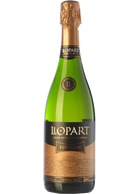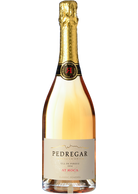Sparkling wine
How to choose a good Cava or Champagne? When looking for a quality sparkling wine, the first two options which come to mind are probably Cava and Champagne. The prestige these French and Spanish sparkling wines have deservedly earned is based on their long-standing history of top quality winemaking. Having said that, given the millions of bottles produced every year by hundreds of producers, it is no easy task to find the right wine for the right moment. Don't worry, we will try to help you discover easily just how to choose a good Cava or Champagne.
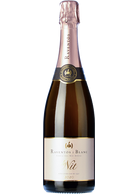


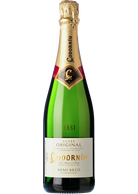






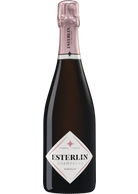















How Cava and Champagne get their bubbles
Both Cava and Champagne are made following the same production system which is known as the 'traditional method', or Méthode Champenoise in the Champagne region. Firstly the must is vinified in much the same way as a white wine but using grapes harvested at an earlier date to ensure a high level of acidity and guarantee the freshness of the resulting wine. Sugar and yeast are then added to the base wine obtained from this first fermentation which is then bottled and left to ferment again inside the closed bottles. This fermentation produces the famous bubbles. After a certain time spent ageing in the bottle in the wine cellars, the wine is carefully disgorged to remove the lees. The small amount of wine lost during this process is replaced, often with a wine and sugar mixture known as the liqueur d'expédition in Champagne production. The amount of sugar in this mixture produces different degrees of sweetness which are used to describe the final wine.
- - Brut Nature (no added sugar)
- - Extra Brut (up to 6 g/l)
- - Brut (up to 12 g/l)
- - Extra Seco/Extra Dry (between 12 and 17 g/l of sugar)
- - Seco/Sec (between 17 and 32 g/l)
- - Semi-seco/Demi-sec (between 32 and 50 g/l)
- - and Dulce/Doux (over 50 g/l).
Ageing traditional sparkling wines
Cava and Champagne are bottle-aged on their lees (yeast deposits which collect at the bottom of the bottle after fermentation stops) and classified depending on the time they age for. Cava can be classified as Young/Joven (at least 9 months’ ageing), Reserva (at least 15 months), and Gran Reserva (over 30 months). The sublime Cava de Paraje Calificado is aged for at least 36 months. Champagne must be aged on its lees for at least 12 months to be called Champagne, and for a minimum of three years to be labelled as Vintage (Millesime), although actually non-vintage champagnes are usually matured for two or three years, while top vintages are often aged for between 4 and 10 years.
Grapes used for Cava and Champagne
Grape varieties used for Cava and Champagne are quite different. Cava is mainly made from Xarel·lo, Macabeo and Parellada grapes, although Chardonnay or Malvasia (Subirat Parent) can also be used. Rosé Cava is usually produced with Mourvèdre (Monastrell), Grenache, Trepat or Pinot Noir grapes. Most Champagne, on the other hand, is basically made from a blend of Chardonnay, Pinot Noir and Pinot Meunier, although there are a few examples of Champagnes made wholly or partially from other traditional local varieties.
The two most famous sparkling wine regions in the world
Catalonia is the principal Cava-making region by far but other regions in other parts of Spain also produce small amounts. The Penedes area around the town of Sant Sadurní d'Anoia is considered to be the historic heart of Cava production. Champagne is mainly produced in northern France to the east of Paris and the most prestigious labels are to be found in and around Reims and Epernay.
Styles of Cava and Champagne and pairings
A range of factors influence the differences in style between Cavas and Champagnes. First of all, Cavas are usually much more fruity thanks to their openly Mediterranean profile whereas Champagnes, coming from cooler latitudes, are fresher and more floral wines. The length of time spent ageing is also a key factor in the resulting wines. Younger ones are ideal for pairing with lighter dishes or to be offered as a welcoming drink, while more aged wines go perfectly with richer food such as meat and elaborate fish dishes or even mature cheeses. The fact is that thanks to their versatility there is a sparkling wine to accompany almost any kind of meal, or even for dessert-time when a Brut, semi-dry, or sweet Champagne or Cava will do the job perfectly.




